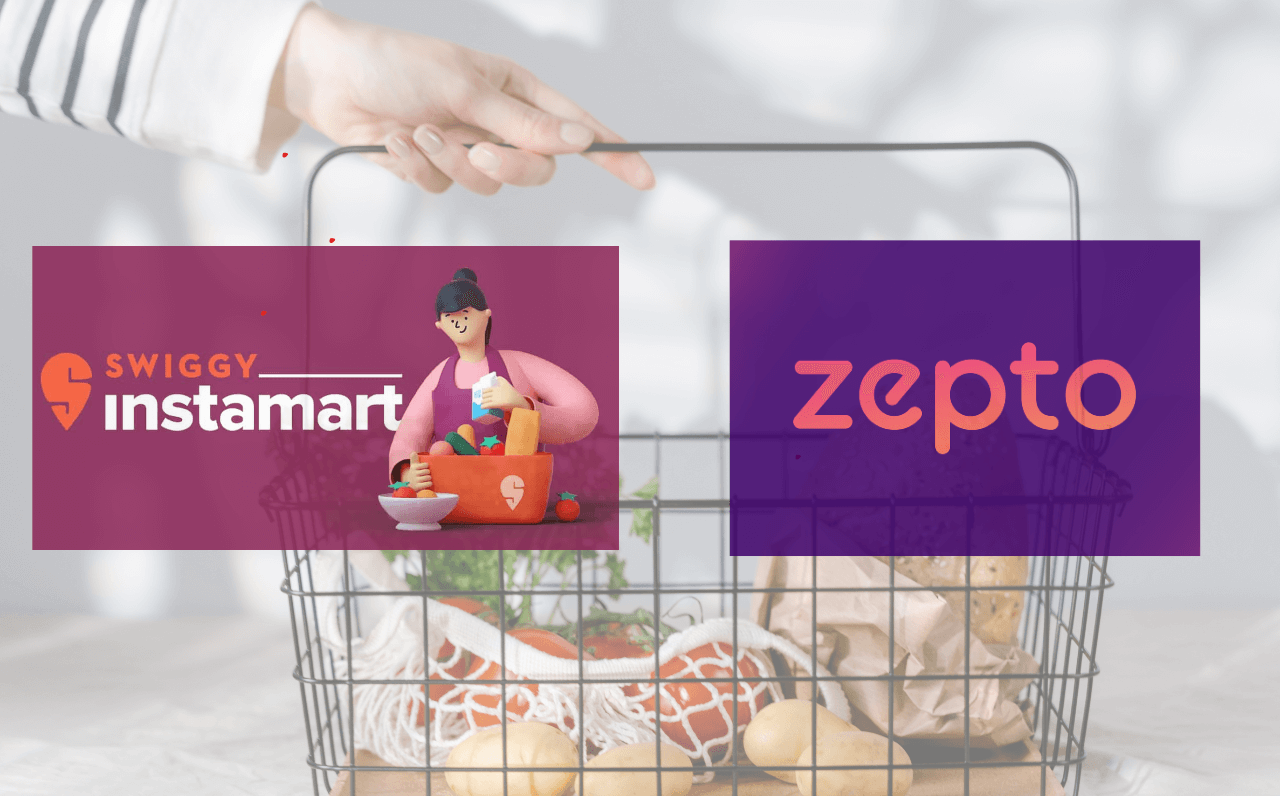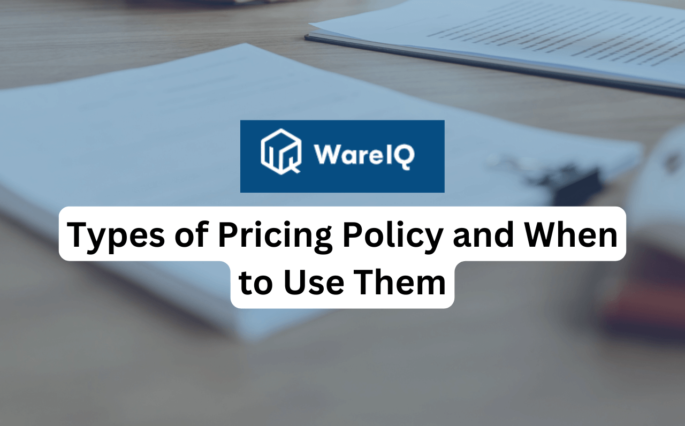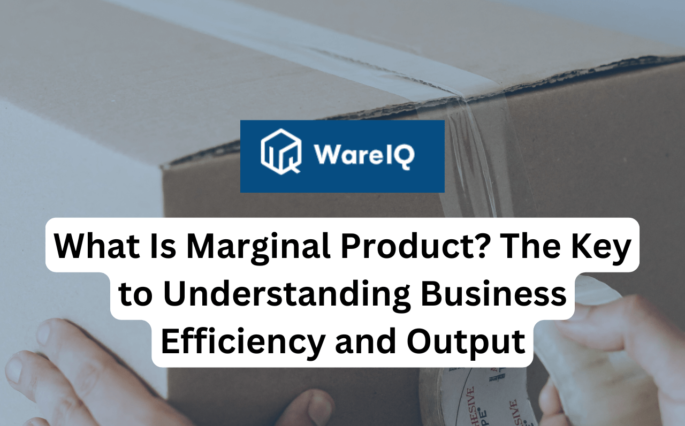Swiggy Instamart Vs Zepto: A Comparative Analysis of Quick Commerce Giants

The rapid rise of quick commerce has dramatically transformed the retail landscape, catering to the growing consumer demand for ultra-fast delivery of everyday essentials. Two major players leading this revolution in India are Swiggy Instamart and Zepto. Both companies have set new benchmarks in terms of speed, convenience, and customer satisfaction, vying to dominate the burgeoning market of quick commerce.
Swiggy Instamart, an extension of the popular food delivery service Swiggy, has capitalised on its existing logistics network to deliver groceries and other essentials within 15-30 minutes. On the other hand, Zepto, a relatively new entrant, has quickly gained attention with its promise of delivering goods within just 10 minutes. This article provides a comprehensive comparative analysis of these two quick commerce giants (Swiggy Instamart Vs Zepto), exploring their business models, operations, and market strategies to understand their impact and future potential in the Indian retail sector. By examining the strengths and strategies of Swiggy Instamart and Zepto, we aim to offer valuable insights for consumers, businesses, and stakeholders in the quick commerce industry.
A Comparative Analysis of Swiggy Instamart Vs Zepto
Speed and Efficiency
- Swiggy Instamart: Typically delivers within 15-30 minutes.
- Zepto: Promises delivery within 10 minutes.
Coverage and Reach
- Swiggy Instamart: Operates in multiple major cities and leverages Swiggy’s existing infrastructure.
- Zepto: Rapidly expanding in urban centres, focusing on densely populated areas.
Product Range
- Swiggy Instamart: Offers various groceries, personal care items, and household essentials.
- Zepto: Provides a similar range focusing on high-demand, frequently purchased items.
Technology and Logistics
- Swiggy Instamart: Utilises Swiggy’s advanced logistics and real-time tracking technology.
- Zepto: Employs data-driven inventory management and strategically located micro-warehouses.
Customer Base
- Swiggy Instamart: Targets existing Swiggy users, leveraging brand loyalty and a broad customer base.
- Zepto: Attracts tech-savvy, urban consumers seeking the fastest possible delivery times.
Pricing and Offers
- Swiggy Instamart: Competitive pricing with frequent discounts and offers.
- Zepto: Similar pricing strategy with occasional promotions to attract new users.
Comparison
| Aspect | Swiggy Instamart | Zepto |
| Speed | 15–30 mins delivery | 10 mins delivery |
| Coverage | Major cities via Swiggy’s network | Expanding in dense urban areas |
| Product Range | Groceries, personal care, essentials | High-demand daily items |
| Logistics | Swiggy’s tech & real-time tracking | Micro-warehouses & data-driven inventory |
| Customers | Existing Swiggy users, brand loyalists | Urban, tech-savvy consumers |
| Pricing | Competitive with frequent discounts | Similar pricing, fewer but targeted offers |
What Is Swiggy Instamart?
Swiggy Instamart is a quick commerce service launched by Swiggy, one of India’s leading food delivery platforms. It focuses on delivering groceries, personal care products, household essentials, and other daily necessities within a short time frame, typically between 15 to 30 minutes. Swiggy Instamart operates through a network of dark stores – local warehouses stocked with high-demand items – strategically placed across urban areas to ensure swift deliveries. By leveraging Swiggy’s extensive logistics network and technological capabilities, Instamart aims to provide consumers with a seamless and efficient shopping experience, capitalising on the increasing demand for convenience and speed in the retail sector.
How Does Swiggy Instamart Work?
Swiggy Instamart operates through a well-coordinated system that integrates technology, logistics, and a network of local dark stores to ensure rapid delivery. Here’s how it works:
- Order Placement: Customers place orders through the Swiggy app by selecting items from the Instamart section.
- Inventory Check: The order is directed to the nearest dark store, where real-time inventory checks ensure the availability of items.
- Order Processing: Store staff quickly pick and pack the items.
- Delivery Assignment: The order is assigned to the nearest delivery partner based on location and availability.
- Real-Time Tracking: Customers can track their orders in real time through the Swiggy app.
- Swift Delivery: The delivery partner picks up the order from the dark store and delivers it to the customer’s doorstep within the promised time frame.
This streamlined process is supported by advanced logistics and tracking systems, ensuring that customers receive their orders quickly and efficiently.
What Is Zepto?
Zepto is a quick commerce startup that has made significant strides in the Indian market with its ultra-fast delivery service, promising to deliver groceries and essentials within 10 minutes. Founded by young entrepreneurs, Zepto has rapidly expanded its operations in major urban centers, focusing on densely populated areas to maximize efficiency. Zepto’s unique selling proposition is its unparalleled delivery speed, achieved through a network of micro-warehouses strategically located close to residential areas. These micro-warehouses stock a curated range of high-demand products, enabling quick order fulfilment and delivery. Zepto aims to revolutionize the quick commerce space by setting new standards for speed and convenience, catering to the needs of busy urban consumers.
Zepto’s Business Model
Zepto’s business model revolves around micro-warehousing and data-driven logistics to achieve ultra-fast delivery times. Key elements of Zepto’s business model include:
- Micro-Warehouses: Zepto operates a network of small, strategically located warehouses that stock high-demand items. These micro-warehouses are placed in close proximity to target customer areas, ensuring that orders can be fulfilled and delivered quickly.
- Technology Integration: Zepto leverages advanced technology to manage inventory, predict demand, and optimize delivery routes. Real-time data analytics help ensure the right products are available at the right time and place.
- Efficient Logistics: Zepto employs a fleet of delivery partners equipped with electric scooters, which are environmentally friendly and efficient for short-distance deliveries. The company uses sophisticated logistics algorithms to assign orders to the nearest delivery partner.
- Customer Experience: Zepto focuses on providing a seamless and fast customer experience. The user-friendly app interface, combined with real-time order tracking, ensures that customers can easily place orders and receive updates on their delivery status.
- Competitive Pricing: Zepto offers competitive pricing and occasional promotions to attract and retain customers, positioning itself as a cost-effective and convenient option for quick commerce.
Suggested read: How Is Swiggy Instamart Redefining Quick Commerce?
How to Sell on Zepto?
Selling on Zepto involves a streamlined process designed to integrate local suppliers and businesses into its quick commerce ecosystem. Here’s how it works:
- Registration: Suppliers and businesses interested in partnering with Zepto can register through the company’s website or app. They need to provide essential information, including business details and product listings.
- Verification: Zepto conducts a verification process to ensure the authenticity and reliability of the suppliers. This may involve checks on product quality, business credentials, and operational capabilities.
- Onboarding: Once verified, suppliers are onboarded onto Zepto’s platform. This includes setting up inventory systems, integrating with Zepto’s logistics network, and training on order management processes.
- Listing Products: Suppliers list their products on Zepto’s platform, ensuring accurate descriptions, pricing, and stock levels.
- Order Fulfilment: When customers place orders, suppliers receive notifications and are responsible for preparing the items for pick-up by Zepto’s delivery partners.
- Real-Time Updates: Suppliers can track orders and manage inventory in real-time through Zepto’s supplier portal, ensuring efficient operations and timely deliveries.
This partnership model allows local suppliers to expand their reach and benefit from the growing quick commerce market while ensuring that Zepto maintains a diverse and robust product offering for its customers.
Suggested read: Learn How to sell on Zepto in 2025
Conclusion
The quick commerce sector in India is witnessing fierce competition between Swiggy Instamart and Zepto, both of which are setting new benchmarks in terms of delivery speed, customer satisfaction, and operational efficiency. Swiggy Instamart leverages its logistics network and technological prowess to offer reliable and swift deliveries. In contrast, Zepto’s innovative approach to micro-warehousing and data-driven logistics sets it apart with its ultra-fast delivery promise.
As consumer demand for convenience and speed continues to grow, the future of quick commerce looks promising, with Swiggy Instamart and Zepto leading the charge. Their continued innovation and focus on customer experience will undoubtedly shape the future of retail in India, making shopping faster, more convenient, and more efficient than ever before.
You may also like to read: Insider’s Guide to Purchase Order Processing on Instamart: Strategies for Success
FAQs About Swiggy Instamart Vs Zepto
What is the main difference between Swiggy Instamart and Zepto?
Swiggy Instamart typically delivers within 15-30 minutes by leveraging Swiggy’s extensive logistics network, whereas Zepto promises ultra-fast delivery within 10 minutes using a network of strategically placed micro-warehouses.
How does Swiggy Instamart ensure fast deliveries?
Swiggy Instamart uses a network of dark stores, real-time inventory management, and Swiggy’s existing logistics infrastructure to ensure rapid order processing and delivery, typically within 15-30 minutes.
What sets Zepto apart from other quick commerce companies?
Zepto’s unique selling point is its ultra-fast 10-minute delivery promise, achieved through micro-warehouses close to customer areas and advanced logistics systems for efficient order fulfilment.
How can local businesses sell on Zepto?
Local businesses can sell on Zepto by registering on the platform, undergoing a verification process, onboarding, listing their products, and managing orders through Zepto’s supplier portal to ensure timely fulfilment and delivery.
What is the future potential of quick commerce in India?
The future of quick commerce in India is promising, with expected growth driven by technological advancements, expanding service areas, a focus on sustainability, and increasing consumer demand for rapid and convenient delivery services.








